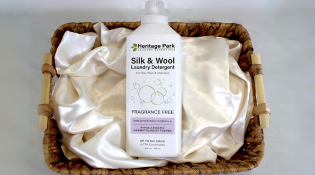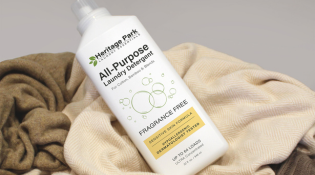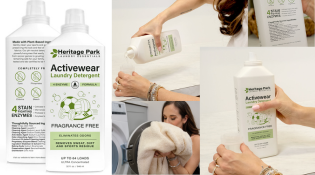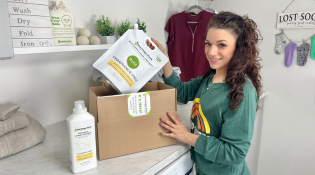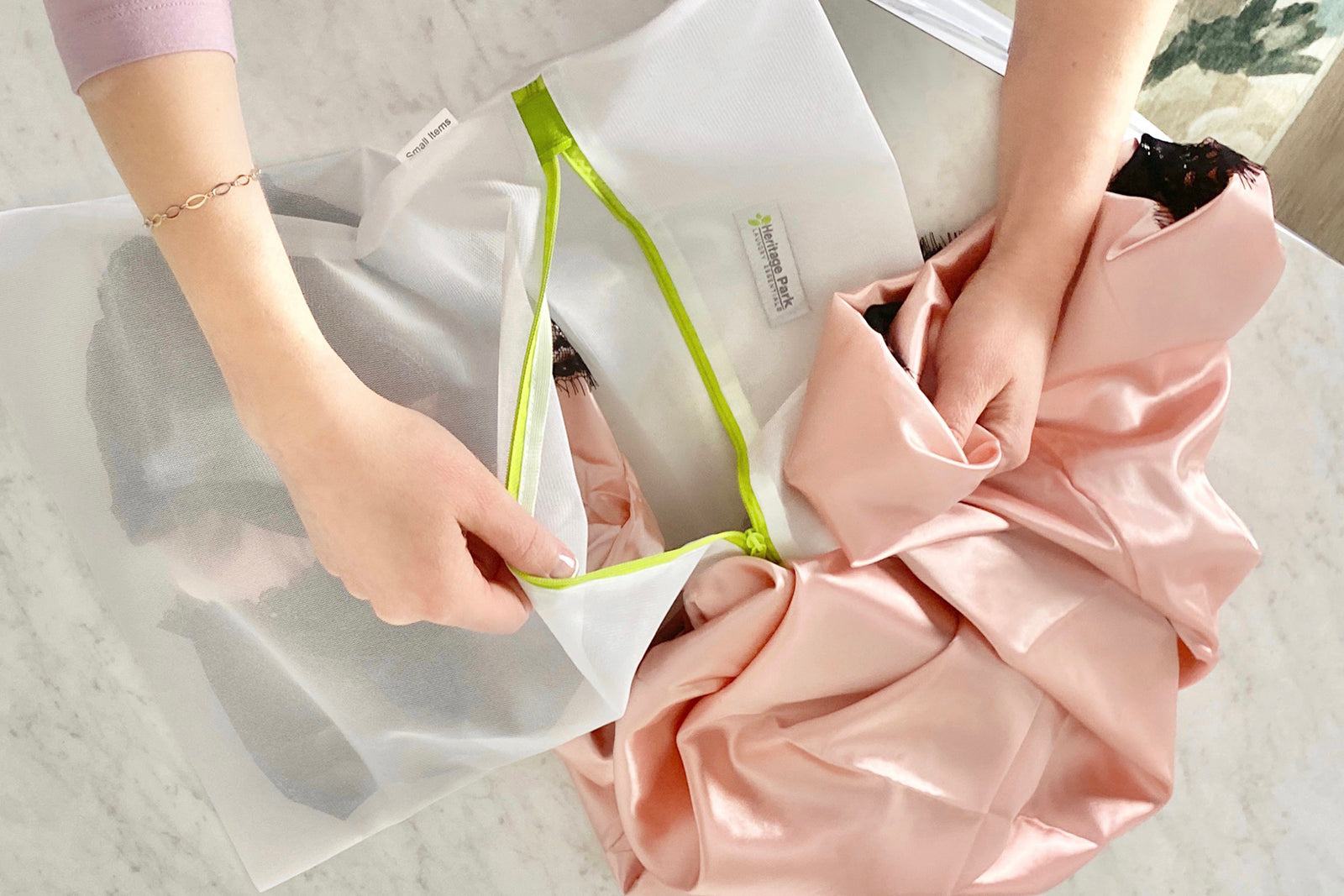This article offers simple step-by-step instructions on how to clean a dirty iron - inside and out.
Knowing how to clean an iron helps keep your laundry game strong (which is our main mission here at Heritage Park Laundry Essentials.) Whether you love to iron or do it only when “pressed,” 🙂 your iron is eventually going to need to be cleaned. So read on for our pro tips on how to clean your iron for top performance.
Inside this Article:
- How Often Should You Clean Your Iron?
- Why Should You Clean Your Iron?
- What You’ll Need to Clean Your Iron
- Steps for Cleaning Your Iron
- Step 1: Safety first
- Step 2: Wipe the exterior
- Step 3: Make a cleaning solution
- Step 4: Clean the water reservoir
- Step 5: Clean the iron soleplate
- Step 6: Clean steam holes
- Step 7: Remove residual buildup
- Step 8: Tackle stubborn stains
- How to Get the Most from Your Iron -- and Your Clothing
How Often Should You Clean Your Iron?
How often to clean your iron depends on how frequently you use it. If you iron so often that you’ve got an ironing station permanently set up in your laundry room, you may want to clean your iron about once a month (or when it’s noticeably dirty). For those who iron less often (we don’t judge), you should at least do it once or twice a year.
Why Should You Clean Your Iron?
It’s a bit of a mystery: if your iron only touches clean clothing and linen, why would it need to be cleaned? The first answer is mineral deposits from hard water, which can accumulate on the surface of your iron, similar to how hard water makes towels rough (you can read about how to treat hard-water damage in laundry here). Along with minerals from water, your iron accumulates other material over time, including fabric starch and even melted synthetic fibers.
These buildups can wreak havoc on your clothes and linen, leading to stains, scorch marks, and even unpleasant odors. To ensure your iron performs its best while prolonging the lifespan of your fabrics, follow our step-by-step guide on how to clean your iron effectively.

What You’ll Need to Clean Your Iron
Before cleaning your iron, gather the following materials, many of which you may already have at home:
- Distilled water
- White vinegar
- Baking soda
- Microfiber cloth or other clean cloth
- Cotton swabs
- An old towel (clean)
You may also want:
- Dryer sheets
- Salt and newspaper
- Magic Eraser or similar
- Ice and a wooden spoon/spatula
Steps for Cleaning Your Iron
Step 1: Safety first
Unplug your iron and allow it to cool down completely before you start the cleaning process. This prevents accidental burns from your hot iron.
Step 2: Wipe the exterior
Using a soft cloth dampened with water, gently wipe down the exterior of the iron to remove any surface dust or dirt. Avoid using abrasive cleaners or harsh chemicals, as they can damage the iron's coating.

Step 3: Make a cleaning solution
In a small bowl, mix a 1:1 cleaning solution of distilled water and white vinegar. The acidic properties of the vinegar will dissolve mineral deposits in both the water (steam) reservoir and on the iron’s soleplate. (Note: if you have very hard tap water, use a 50/50 solution of tap and distilled water in steam irons.)
Step 4: Clean the water reservoir

Empty any liquid currently in the water tank and fill with the white vinegar/distilled water mix. Turn the iron on and allow it to warm up for a few minutes. Once it reaches temperature, press and hold the steam button for at least five times. Turn off the iron and let it cool down. Pour out any remaining vinegar/water from the reservoir. Fill the reservoir with plain distilled water, turn on the iron and when it is to temperature, steam the distilled water through.
Step 5: Clean the iron soleplate
Dip a soft cloth into the vinegar-water solution and gently scrub the metal plate of the iron. Focus on areas with visible stain buildup, but be careful not to scratch the surface.
Step 6: Clean steam holes
If your steam holes are clogged with gunk, dip a cotton swab in the vinegar/water solution and wipe out each steam hole.

Step 7: Remove residual buildup
To remove residual buildup, sprinkle a small amount of baking soda on the soleplate while it's still damp from the vinegar-water solution. Gently rub the baking soda in circular motions with a soft cloth. The combination of vinegar and baking soda will help break down the toughest residue.

Step 8: Tackle stubborn stains
Here are some other methods for cleaning a dirty soleplate, or removing more stubborn stains from the bottom of the iron (only do these when the iron is completely cool):
- Use a more concentrated paste of baking soda and water and wipe with a cloth.
- Wipe with a damp Mr. Clean Magic Eraser.
- Use a dryer sheet (these are terrible for laundry, read here why, but if you have them lying around this is a fine way to use them up).
- Iron salt on newspaper: turn your iron to warm (no steam) and cover your ironing board first with newspaper and then a layer of salt. Move the iron gently across the salt to remove burn marks and residue. When the iron cools down, wipe away salt with a damp cloth and warm water.
- To remove melted plastic, allow iron to cool then place on top of ice cubes (in bowl or tray). Once the soleplate is cold, use the wooden spoon or plastic utensil to scrape off hardened plastic.

How to Get the Most from Your Iron -- and Your Clothing
After deep cleaning, ensure your iron is entirely dry before storing it. Store the iron in an upright position in a cool, dry place. Avoid wrapping the cord around the iron, as this can cause damage over time. Following the guidelines below can also help you preserve your clothing and home linen and protect them from iron damage:
- Always check garment labels for ironing instructions before applying heat to delicate fabrics.
- Test the iron's temperature on an inconspicuous area of the fabric before ironing to prevent scorch marks.
- Avoid ironing over zippers, buttons, or metal embellishments that may damage the fabric or scratch/melt onto the soleplate.
- Store your ironing board cover and pad in a clean dry space.
- If your tap water is very hard, use a 50/50 mix of tap water and distilled for steaming.

By following these steps and incorporating proper maintenance into your ironing routine, you can keep your iron in top-notch condition and ensure the longevity of your clothing and home linen. Of course, we also recommend using Heritage Park Laundry Essentials Detergent, made with a plant-based formula that is effective on dirt and stains but gentle on fine fabric. Available in All-Purpose and enzyme-free Silk and Wool formulas.
As always, the Heritage Park clean team is happy to answer questions about our products and caring for your laundry.
Heritage Park Laundry Essentials
At Heritage Park, caring for fine fabric is our passion. As lifelong collectors of luxury sheets, towels, and cloths, we found many commercially available "gentle detergents" either damaged our fabrics or didn't get the job done, leaving stains. We knew we could do better. So we developed a formula with the perfect balance of powerful -- yet safe -- ingredients designed to remove tough, set-in stains while remaining gentle on luxury linens. Please connect with us at (800) 977-1841 or visit our store with product feedback or cleaning questions.


